Borders between any two countries have always been a subject of attraction and intrigue for both citizens of the countries as well as travellers and tourists visiting them. Borders are in fact the end and beginning of many things, that define the countries divided by them. Moreover, the places, towns, and villages located near the borders inherit a very distinct history and culture. These villages have their own very interesting stories to tell. India, which is landlocked towards the north and a peninsula towards the south, shares some famous as well as some infamous borders with its neighbours. While the very popular ‘Wagah Border’ in Amritsar is very well known to us, especially for its ‘lowering of the flags’ ceremony, which is a big draw for the tourists, the borders towards the east and northeast of India, still remain unexplored to a great extent. Today, in this blog we bring to you, one such village, which is the last Indian village near Indo-Tibet/China border and certainly not among the usually popular places to visit in Uttarakhand. Are you ready to discover and lose your heart to Mana village? Let’s Go!
Mana – A Tourism Village
Nestled in the Himalayas, located in the district of Chamoli in Uttarakhand, Mana is the last Indian village from the border of India and Tibet/China. Located near the religious site of Badrinath, on the banks of River Saraswati, Mana village is situated at a height of around 3219 meters. People often get confused between Mana in Uttarakhand and Chitkul in Himachal Pradesh, as to which one of these holds the title of being ‘the last Indian village’? So let’s first clear things out… Chitkul is basically the last inhabited village located on the Indo-Tibet/China border, but Mana in Uttarakhand is officially recognised as the ‘last village of India’. With many trekking and hiking spots, a waterfall, the mystical River Saraswati, ancient temples and, exquisitely carved and decorated small cottages of the villagers among many other things adorning Mana village or Mana Gaon (as colloquially known), no wonder the Uttarakhand government has designated it as a ‘Tourism Village’. Mana is also famous for its woollen garments and materials made up of sheep wool, like, shawls, caps, muffler, ashan, pankhi (which is a thin blanket), carpet, etc. Moreover, here, you’ll notice the shopkeepers in the region selling their products, using the title ‘Last Village’ like ‘India’s Last Tea and Coffee Corner’, which is quite interesting and amusing at the same time. Last year, the village was also awarded the ‘best clean, iconic tourist destination’ under the Swachh Bharat Mission (Rural) at the Swachh Mahotsav 2019, held in New Delhi last year.
Mana from The Mahabharata
The traces of The Mahabharata are visible in India’s last village - Mana. It is believed that the Pandavas crossed the Mana village during their final journey to heaven. There’s also a stone bridge called Bheem Pul near River Saraswati that’s believed to have been built by Bheema. It really feels that once upon a time Gods, indeed lived next door in this mystical village, in the Dev Bhoomi of Uttarakhand. It’s just amazing to learn that the kids of Mana know the stories from the Mahabharata by heart. Also present here are the divines caves – Vyas Gufa and Ganesh Gufa. Vyas Gufa is the cave where Ved Vyasa compiled the four Vedas and narrated Mahabharata for the first time. The cave houses a small shrine dedicated to him and is believed to be 5,000 years old. A short walk away from Vyas Gufa is Ganesh Gufa. A short walk away from Vyas Gufa is Ganesh Gufa where it is believed that Lord Ganesha wrote the epic Mahabharata.
Places to visit in Mana
Apart from Vyas Gufa and Ganesh Gufa, Mana village houses quite a few tourist attractions, some of which are absolute nature’s bliss, while some are straight out of mythology. When in Mana gaon, these places are certainly not to be given a miss.
1. Neelkanth Peak
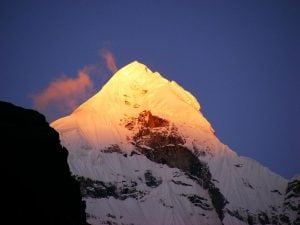
Set at an altitude of 6597 ft. above sea level, Neelkanth Peak is one of the major attractions in Mana Gaon. Also known as ‘Queen of Garhwal’, this snow-clad peak beautifully towers the Badrinath Temple and makes for a must-visit attraction for every adventure and trekking enthusiast.
2. Tapt Kund
As per Hindu mythology, Tapt Kund is the holy abode of Lord Agni or Fire God. This natural spring is believed to have medicinal properties, and people say that taking a dip in the ‘Kund’ water cures skin diseases.
3. Vasudhara
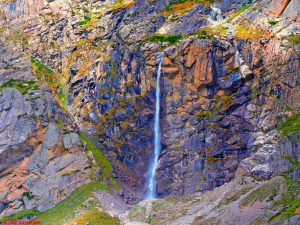
Just 9 km. from Badrinath Temple lies the picturesque Vasudhara waterfalls, which is believed to have been home to the Pandavas for some time when they were in exile. The view of Vasudhara river valley gives panoramic views.
4. Bheem Pul
One of the prime attractions in Mana Village is Bheema Pul. This bridge is straight out of a myth. River Saraswati originates out of rock near Bheem Pul and although it’s a narrow stream, the noise of the water is deafening. There’s a natural stone bridge over the gushing river here and legend has it that when the Pandavas were crossing this river on the way to heaven, Bheema lifted a massive rock and placed it here to help his wife, Draupadi, cross the river. Right next to Bheem Pul you can also see a 20 ft. tall foot-shaped mark on the rock that is said to be the footprint of Bheema.
5. River Saraswati
The mystical River Saraswati is named after the Goddess of wisdom and quite fittingly here on its bank one of the greatest Indian epics – The Mahabharata was written. The river is known as Gupt Gamini or the Hidden River since it flows just about 100 metres from its origin and then merges into River Alaknanda at Keshav Prayag in Mana. According to the myth, the gurgling flow of the river was disturbing Ved Vyas to focus on Mahabharata and hence he cursed the noisy river to disappear.
6. Mata Murti Temple
The Mata Murti Temple is dedicated to the mother of Lord Narayan. According to folklore, Mata Murti requested Lord Vishnu to take birth as her son. Lord Vishnu granted her this wish by taking birth in the form of a twin, Nar, and Narayan. Many tourists visit this temple during the annual fair, held in the month of August.
Adventures Around Mana
With the entire state of Uttarakhand being a great adventure land, how can Mana be deprived of this adventure touch? Mana gaon is a gorgeous village beyond words and offers a number of interesting activities to adventure enthusiasts. This last Indian village is considered as one of the best places for trekking in India, with hikes and offbeat trails you’d like to explore that include Mana to Vasudhara, Mana to Mana Pass, and Mana to Charanpaduka, Mana to Swargarohini, Mana to Satopnath Lake, among others. Let’s have a look at some of these treks...
Where to Eat?
Badrinath is the nearest convenient temple town to get quick meals during your visit to Mana village. Although there are a few chai and snack shops in Mana but don’t depend on the food availability in the village. There are many vegetarian restaurants in Badrinath. Vegetarian thali is an easily available healthy meal you can get anywhere here. You’ll also find many eateries and restaurants serving South Indian food, owing to the inflow of pilgrims from the South at this shrine.
How to reach Mana?
1. By Flight
The closest airport from Mana village in Uttarakhand is the Jolly Grant Airport that is situated at Dehradun. The distance between the village of Mana and Dehradun is around 320 km.
2. By Train
Mana can be easily reached from Rishikesh/Haridwar and is only 5 km. from Badrinath Temple. The nearest railhead is at Haridwar, around 275 km. away and one can take a bus/taxi to reach the village from outside the railway station. Haridwar Junction is a very well-connected and busy railway station that receives trains from different parts of the country. If you are reaching Dehradun by train, regular buses are available from outside the Dehradun railway station too.
3. Further Journey by Road
To reach this last Indian village, hire a taxi, opt for a shared cab or take a bus to Badrinath/Govindghat from Dehradun or Haridwar. The journey takes almost 7-8 hours. If the bus drops you at Govindghat, regular buses are available to reach Badrinath. You can hire a taxi to reach Mana from Badrinath.
Best time to visit
The best time to visit Mana village in Uttarakhand is from June to September. It’s recommended that one avoids the monsoon month of August when there are heavy rains almost every day and the roads get blocked frequently.
The next time you plan your Uttarakhand tour package, do include this India’s last village Mana in your itinerary. It’s true that a fortunate stroke of serendipity just happens out of the blue but when serendipity is as serene and special as Mana, one just can’t wait for it to happen by chance rather it needs to be all pre-planned. We are pretty sure; the memories you’ll make at this India’s last village will last a lifetime.
Celebrate Rural India! Celebrate Life!








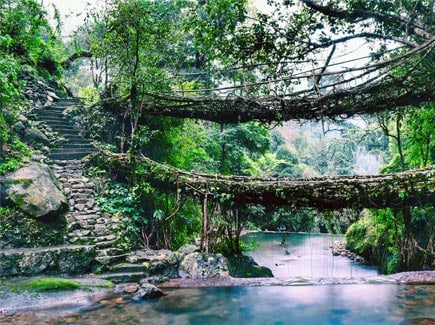
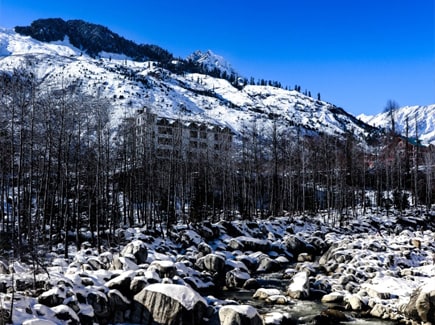













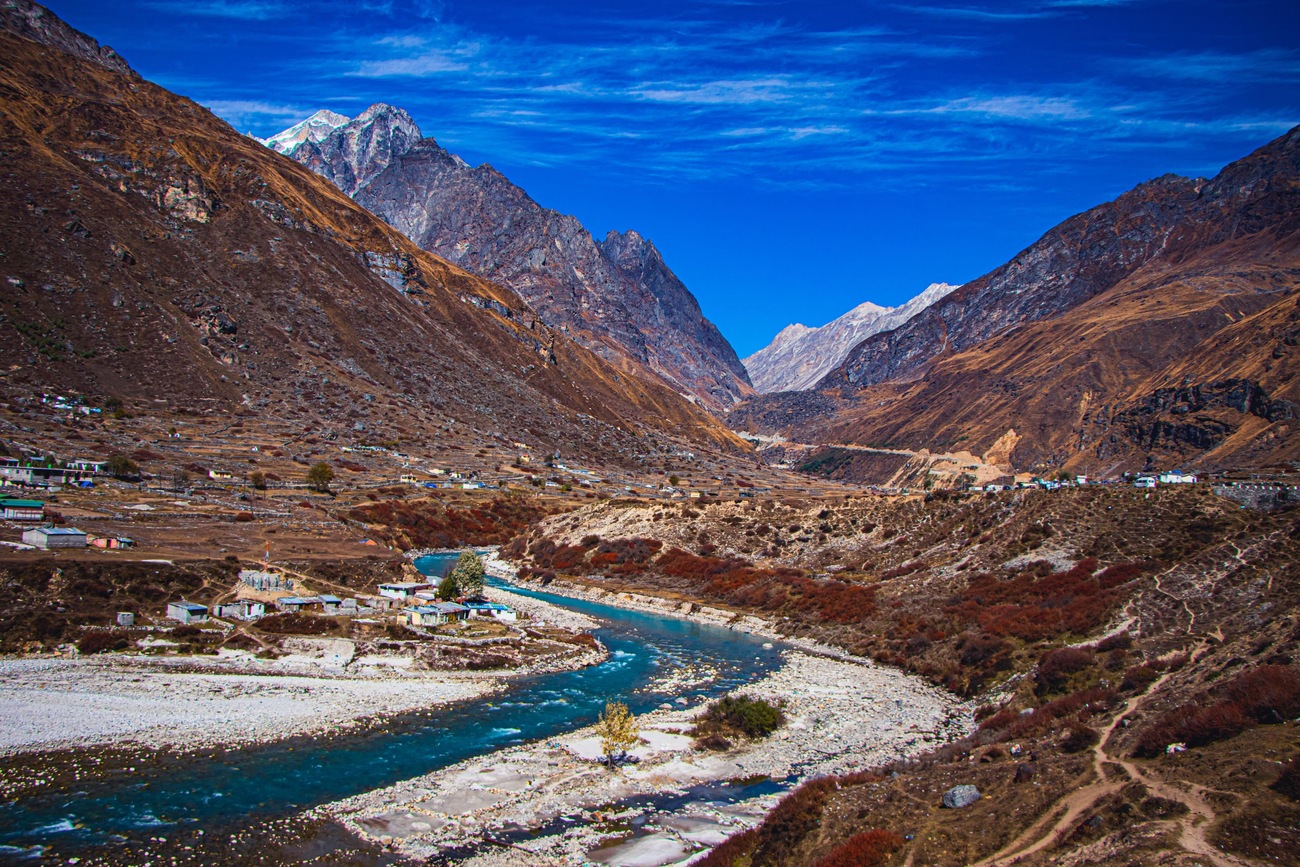










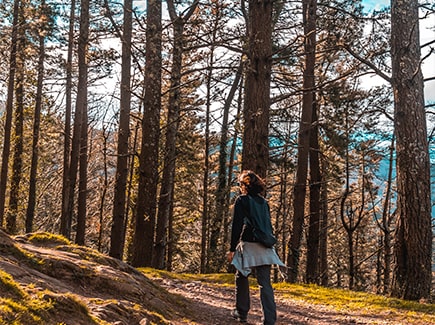











Post your Comment
Please let us know your thoughts on this story by leaving a comment.